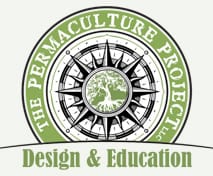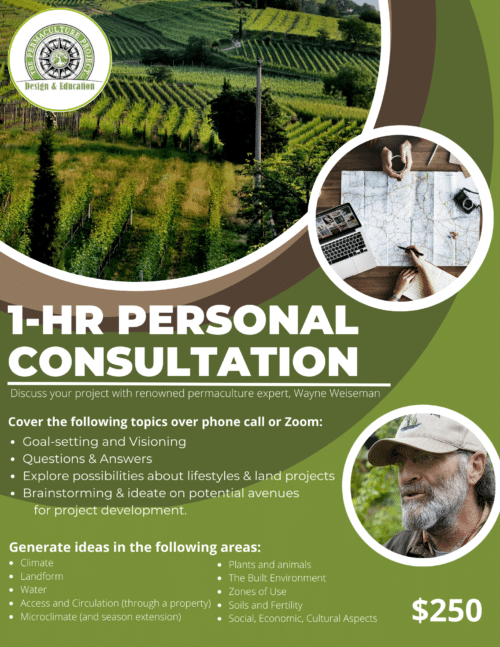Description
How can we harvest all the food groups that we typically eat from on a quarter acre or less, and from foraging locally? How can we have a complete diet with a diverse and mineral rich variety of foods? We are a culture that has grown up on a predominately grain-based diet. We have processed and reprocessed grains to the point of absurdity: breads, chips, pastas, etc. There are basically eight foods that feed the world and they are almost all grains. Settlement and grain-based agricultural systems go hand in hand. How important is this prevalence of grains for a human being’s health and wellbeing? In this book we will find out that grains are not the “staple” that is necessary for our nutritional balance. But what can we accomplish on a fifth of an acre and through foraging in the middle of an urban or suburban area or on ten thousand acres? Small, intensive systems are what feed us, systems that are doable at a human scale, systems that contain all the proteins, minerals, and vitamins that we need in order to lead a healthy existence for our entire lives. The following easily harvestable foods are what make this possible on small to large acreage:
- Dairy: dwarf goats (milk, kefir, yogurt, cheese)
- Meat: guinea pigs, rabbits, chickens, ducks, squirrels, wild game, fish (ponds and aquaponics), insects (entomophagy)
- Grains: quinoa, wheat, corn, oats, amaranth (wild and cultivated)
- Vegetables: wild and cultivated
- Fruits: wild and cultivated (mulberries, raspberries, blackberries, gooseberries, currants, crabapples, pears, etc)
- Nuts: wild and cultivated (acorns, hazelnuts, hickory nuts, walnuts)
- Sweets: maple, birch, sycamore, walnut syrups; honey
- Salt: dehydrated seawater
- Oils: oil press for nuts, sunflower seeds
- Ferments
- Sprouts (in jars and on soil), microgreens
- Smoothies and juices (fruit and vegetable)
- Eggs (chickens)
- Dehydrated foods
Where does it all begin? In the kitchen? The backyard? Water? Animals? Building? Energy? It all begins where we find ourselves, the region, the ecosystem in which we find ourselves. And we essentially begin with climate, our foremost “limiting” factor. Can we work effectively within the context of the seasons and produce enough food to meet our needs, collect and store water, safely house our animals, and make our homes as efficient as possible (minus the gadgets), based intrinsically on the movement of the sun through the year?
Is it doable? I ask myself this question each time I endeavor to place a new element into the landscape, the homestead. How much work, time, study, will it demand of my family? Will it contribute to our sustenance, our basic necessities, our health? Could others do this readily? How local are the materials, the seeds, the tree stock we are procuring? What will we do with the excess yields, should we have an abundant year? Am I merging my efforts with the natural cycles that interpenetrate our existence and give us life? Do I follow the ethics, methodologies, living principles that I believe in? Do I follow my intention?
There are many questions to ask in order to maintain integrity with life choices. Knowing that by following wholeheartedly the dictates of the heart, I may proceed with the building of a suburban homestead in good conscience.
We cannot separate any move we might make from the whole of our existence. From an ecological perspective, food webs, circulation of materials and energy within a community of beings, the intersection of biotic and abiotic elements, all creatures subsumed under one great idea: relationship.
The suburban homestead is no different than any other homestead, large or small. Scale makes little difference. With perseverance and good management any size homestead can be a successful endeavor. Small scale, intensive systems are all the more doable. Millions of acres of dormant suburban and urban lots buried in lawn, and battles with the nutritious dandelion, are our greatest single opportunity to produce our needs close to home
We eliminate so many destructive, cause and affect issues by producing crops at the backdoor, and inside the home. And it is doable with little time and effort expended. This is quality effort, quality time. It puts our hands back in the earth, our senses absorbing all the natural nuances of this fine planet. It makes us want more: more trees, more healthy foods, more contact with our neighbors, more deep satisfaction knowing that we won’t have to strip the earth of all its treasures anymore. We can and will make do with what we see, touch, and feel in our immediate environment.
The suburban homestead is a concept and a reality. The development of a master plan for our property begins the process by creating a conceptual map for placement of all elements for maximum production and yield, and the techniques to get there. Take the first step now!


